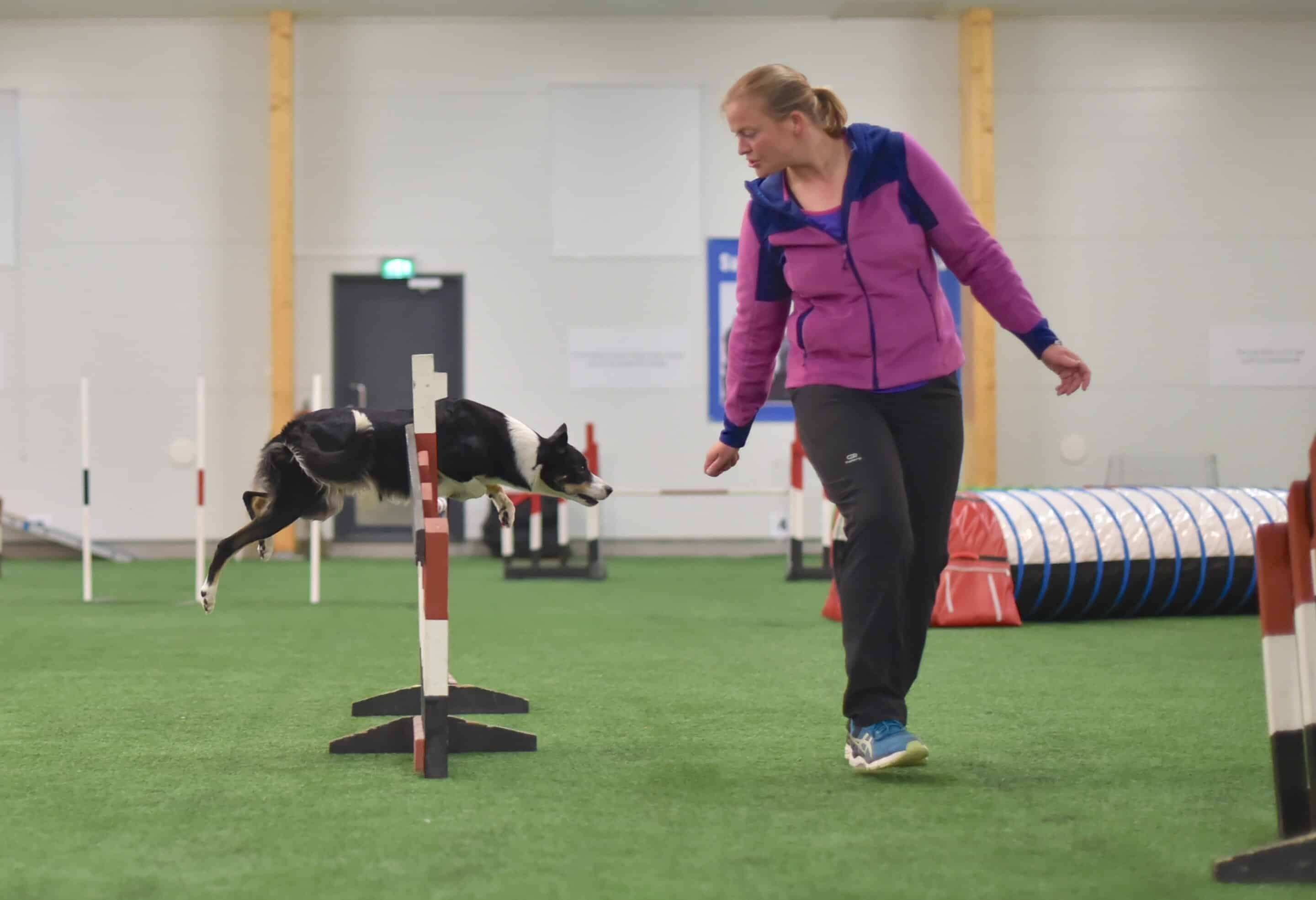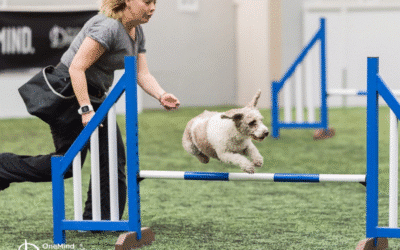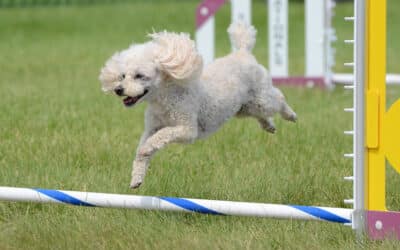Does your dog fly around the agility course like a rocket, taking wide turns or knocking bars when you need them to tighten up? You’re not alone. Many handlers struggle with teaching collection. And without it, those tight, efficient turns stay out of reach.
This post is based on our popular webinar with OneMind Dogs Instructor Stephanie Williams, where she explains how to teach and handle collection so your dog can safely and consistently turn tight in agility.
👉 Watch the free recording of the webinar here
What is collection?
In agility, collection means your dog shortens their stride before a jump so they can take off closer to the bar and prepare for a tighter turn.
- Extension = long, powerful strides that send your dog forward.
- Collection = shortened strides that let your dog turn tightly and land safely.
Collection is essential not only for fast, efficient courses, but also for your dog’s long-term health. Approaching a jump in full extension without collecting puts strain on their body. Teaching collection helps them move in a way that is kinder on their joints and muscles.
Teaching your dog to collect
At OneMind Dogs, we teach collection to all dogs, whether they’re natural jumpers or not. Through specific exercises, dogs learn to:
✔️ Dive over the bar
✔️ Lower their head while jumping
✔️ Use their body efficiently to prepare for the next obstacle
Think of collection as a foundation skill. Once your dog understands it, handling techniques that cue tight turns become much clearer.
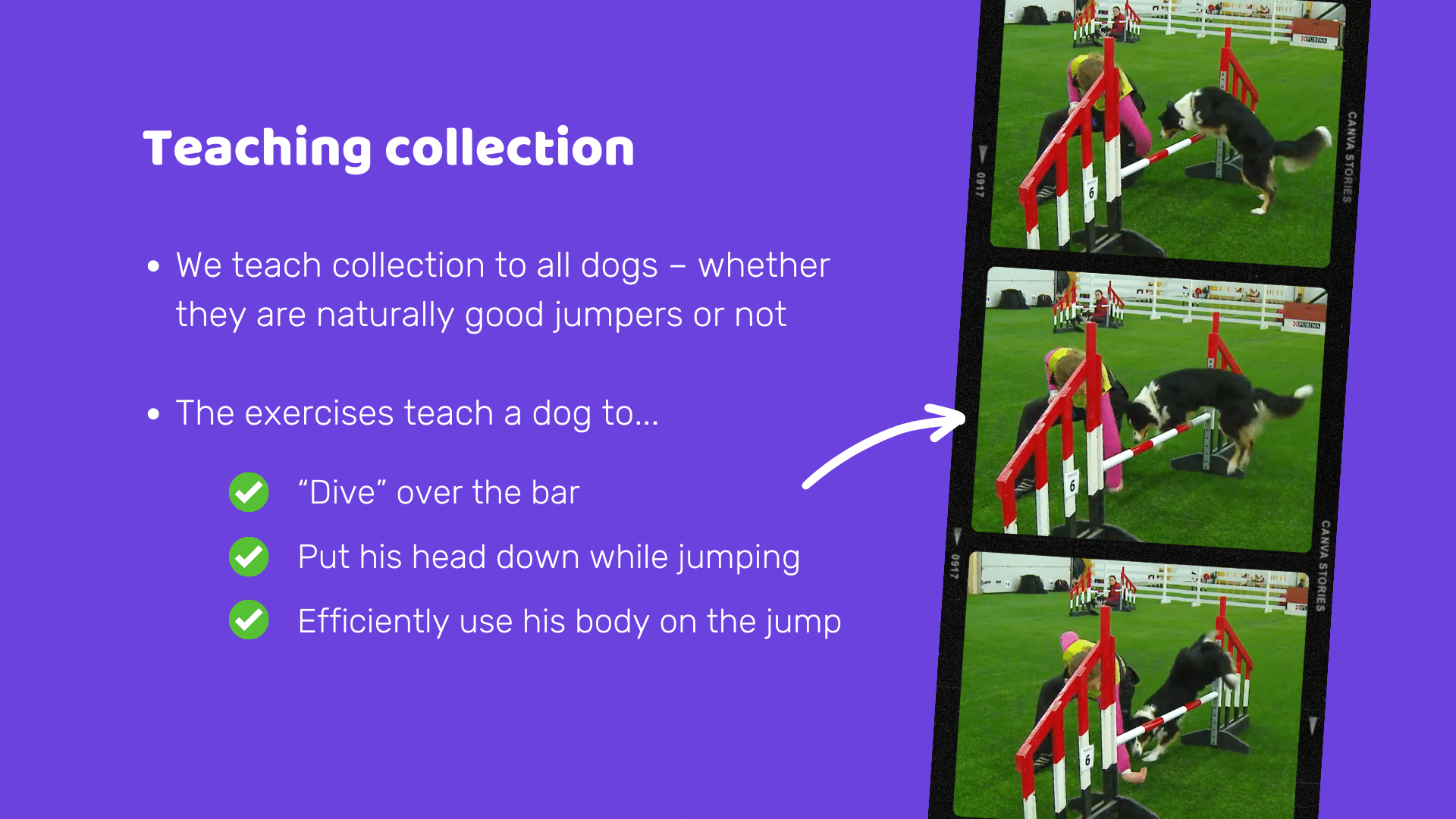
Handling techniques that cue collection
Collection isn’t just about what your dog does, it’s about how you handle. Here are some examples of handling techniques that cue collection:
- Human Arrow: Teaches your dog to take off and land close to the obstacle for a diving-style jump.
- Reverse Wrap: Helps your dog square up on the backside of a jump for a tight wrap.
- Jaakko Turn: Gives early turning information so your dog collects and turns safely while staying on the same side.
- Front Cross: A side change that also cues collection, but only if started at least one stride before the dog’s take-off point.
The common thread? Clear, early cues that tell your dog to shorten their stride before jumping.
What cues collection?
From the dog’s perspective, these signals mean “collect now”:
- Rhythm change (you slow down, so they do too)
- Turning your chest laser toward the dog
- Moving toward the dog or the jump’s take-off point
- Using the opposite or lowered hand
- Verbal cues that match your body language
Dogs read body language before anything else, so your timing and connection matter more than the words you use.
Why collection sometimes doesn’t happen
If your dog still takes wide turns, it’s usually one of these reasons:
- Your rhythm change came too late
- Chest and feet pointed the wrong way
- You weren’t looking at your dog
- The handling technique wasn’t finished on time
- Your dog hasn’t learned the skill of collection yet
The good news? All of these can be fixed with clear handling and practice.
Watch the webinar here to learn more and see video examples!
Key points to remember
✅ Timing: Cue collection at least one stride before take-off.
✅ Handling elements: All seven elements of handling (including motion, position, and eye contact) must align.
✅ Connection: Keep your eyes on your dog so they know you’re talking to them.
When you get these right, your dog will understand when to shorten their stride and prepare for that tight turn.
Watch the full webinar
This blog just scratches the surface. In the webinar, Stephanie shows real examples of handling techniques, training exercises, and troubleshooting tips so you can see exactly how to apply them with your dog.
👉 Watch the free webinar replay here
With practice and the right cues, you and your dog can nail tight turns, keep bars up, and run smoother courses together.
